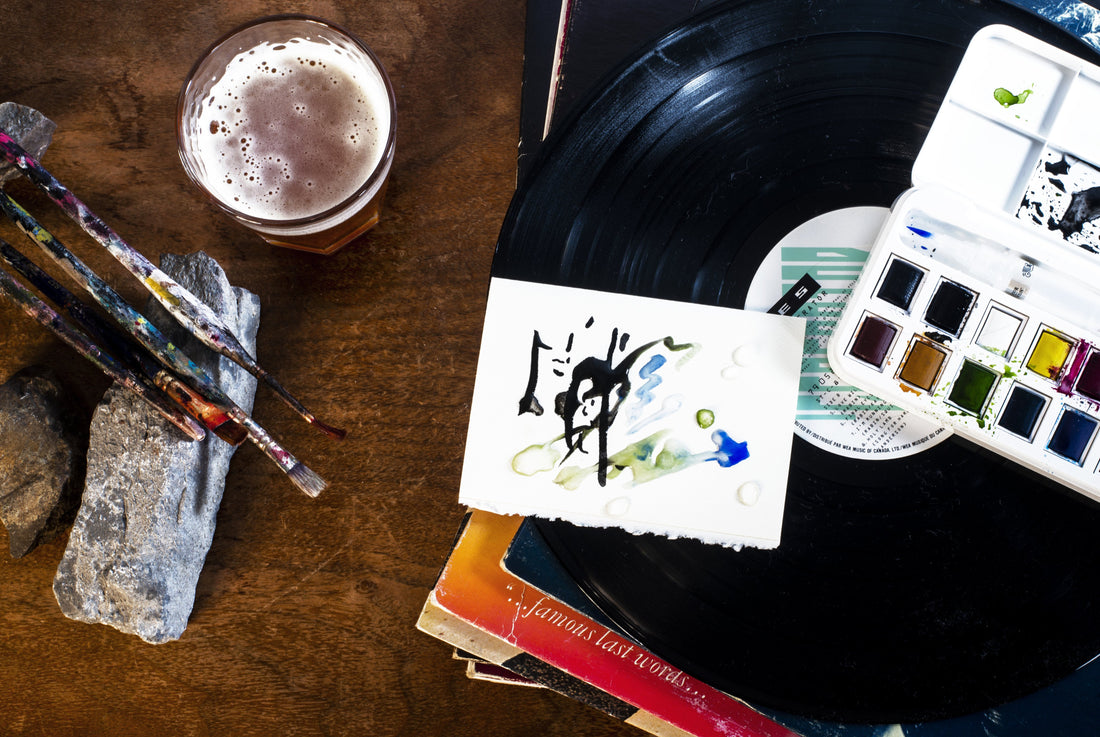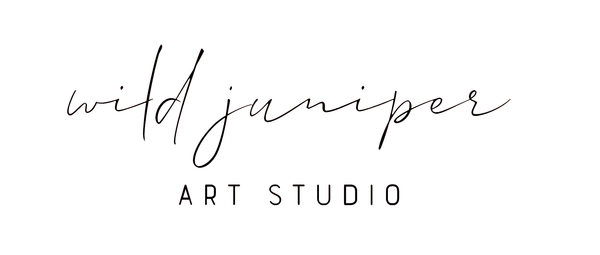
Must-Have Watercolour Supplies for Beginners
Share
Perhaps you’re an experienced watercolour artist, or maybe you’re just starting out. Either way, there are several supplies that I believe are essential. You may not use them all in every painting that you create, but if you’re looking to stock up, here’s what I suggest having in your tool kit! I am local to Ottawa, Ontario, Canada so I have linked local makers and art stores in an effort to encourage artists to support small businesses! I hope that readers of this blog will take the time to scout out some talented artists to buy their supplies from!

1. Watercolour Paints
It’s fairly obvious that you’ll need watercolour paint. But what brand and what type you should use really becomes a personal choice.
Tube Paints
The watercolour paint found in tubes is thick. It can be squeezed out on a palette and thinned with water to create paint. When tube paints dry, they can be reactivated with water just like cake or pan watercolours.
Tube paints are best for intense colors. The color is naturally more concentrated than the cake form of the paint. “Muddied” colors are less likely to occur with tube paints since contamination is less likely to occur. I find that mixing colors is a bit easier as well.
What to Buy: I recommend starting out with Winsor & Newton’s Cotman Watercolours for tube paints. The colors are strong and intense but won’t break the bank.

Cake (or Pan) Paints
Cake watercolours are concentrated blocks of pigment. When water is added, the color becomes activated. In many situations, cake watercolours are preferred. If you are painting “on location”, or just “sketching”, cake watercolours are a perfect solution. One drawback to pan watercolours is that color can become contaminated easily when going from pan to pan without washing your brush.
What to buy:
For cake watercolours, I love Beam Paints Paint Palette Collection. Beam Paints are handmade watercolour paints made from lightfast pigments, tree sap, gum arabic, and Manitoulin honey, blended together to create a saturated colour that is a joy to paint with! Beam paints are all made on Manitoulin Island, Ontario Canada! Beam Paints draws on my early education in Indigenous pigment and expands it to encompass all paint traditions. A focus on high quality pigment content creates sublime artist materials, with plastic free packaging.

2. Brushes
The brushes that you choose are also a personal decision. Many artists find a particular brand that they prefer. You’ll also find that particular brush types and shapes will produce different results which can be used for specific applications. I received the majority of my brushes as a gift from my grandmother who was a watercolour artist herself. So, my brushes are over thirty years old! That just goes to show, it is worth it to invest in good quality brushes!
Softer bristles are generally preferred by most artists. I personally prefer soft nylon brushes because of the excellent spring and control of the stroke. I also prefer nylon as I try to avoid buying any brushes made with animal hair!
Essential Brush Sizes that I Use:
Size 2
Gives you flexibility to paint smaller paintings and more details.
Size 6
If you're only starting with one brush a 6 is a great choice. Small enough for details, but big enough to paint larger areas.
Size 10
Paint larger washes and make big, bold strokes.
What to Buy:
The Pigeon Letters Brush Set. These brushes are eco-conscious. These round brushes are ideal for applying effortless strokes and getting into the tiny aspects of detailed work. All brushes are cruelty-free and have professional grade, pure synthetic bristles. No animal hair = no animal abuse! As well, The Pigeon Letters donates a portion of all proceeds to nonprofits working toward sustaining wildlife.

3. Masking Fluid
Masking fluid is a latex-based fluid that can be applied to the surface to preserve areas of the paper or previously applied washes of color.
While masking fluid is great for added control in layering colors, it should be noted that it can absolutely destroy a paintbrush. It is advised to use an old brush to apply masking fluid or another tool such as a toothpick. Once the masking fluid has served its purpose, it can be removed by gently rubbing with a finger, leaving preserved/unpainted areas on the surface.
What to Buy:
I personally use Winsor and Newton Masking Fluid. I find it the easiest to use and it is available at my local arts and crafts store!
4. Masking Tape
For smaller paintings, masking tape can be used to adhere and stretch watercolour paper on a rigid surface or support panel. For larger paintings, staples and a stronger tape (gummed paper tape) may be used.
What to Buy:
Masking tape can be bought at most art supply or hardware stores. I’ve tried many but I will share this Masking Tape example with you as I use it the most often!
5. Watercolour Paper
The surface that you choose to work on is just as important as the brush and the paints. Watercolour paper is absorbent, allowing for multiple applications of washes without much buckling. Watercolour papers are quite varied, but there are three main forms. Each form of watercolour paper is categorized according to its manufacturing process and the weight of the paper.

Cold Press
Perhaps the most popular form of watercolour paper is cold press paper. It is referred to as “cold press” since the paper is rolled on cold cylinders during the manufacturing process. This process produces an irregular dimple pattern in the paper.
Hot Press
Hot press papers are a bit smoother in texture since the paper is rolled on hot cylinders during the manufacturing process. Brush strokes are usually visible on hot press papers.
Rough
Unlike hot press and cold press papers, rough papers are not rolled on cylinders at all. Instead, they are hard pressed, or not pressed at all. The resulting texture is a heavy tooth of an irregular pattern.
Papers are also categorized according to their weight. Heavier papers are usually desired because they are more rigid and capable of holding many washes of color. The weight of the paper refers to the weight of a ream of paper (500 sheets). Usually, heavier weights of paper are more expensive and are considered higher quality.
What to Buy:
As a new artist, I started by buying lower quality paper, not knowing what I was missing out on! Now, I make the investment in higher quality paper because I can notice the significant difference it makes in my artwork! I personally prefer working with Watercolour Blocks because they buckle less and I don’t need to fasten it to a support panel. Although, I am not against using a Watercolour Paper Pad! Watercolour pads tend to be cheaper than blocks. I typically use a pad for quick paintings or practice and use a block for a painting that requires a lot of work and detail.
6. Support Panel
Most artists prefer to adhere watercolour paper to a support. This can be any type of rigid surface that will provide a heavy backing which you can adhere watercolour paper to. I personally use a wooden panel for this. Wooden panels can be picked up at any local art supply or hardware store and they are usually fairly inexpensive.
When a support is used, the work can be propped on an easel. For those that prefer to work on a flat surface, a support panel allows you to lift and tilt the painting, directing the wet paint to flow into desired areas on the surface.
What to Buy:
Here is a Russian Birch Panel that is inexpensive and comes in a variety of sizes to suit your needs! It is not the exact one that I use as mine was given to me by my grandmother ages ago!
7. Palette
There are a variety of palette options for the watercolour artist. I prefer to use a ceramic palette because I find them aesthetically pleasing. But I also have a plastic and metal palette that are both closeable so I can take them on the go! Palettes that can be sealed keep the paint wet for a much longer period of time. But as I just mentioned, this is not always necessary with watercolours. Plastic palettes allow for easy removal of the paint when dry and are water resistant.
What to Buy:
Ellie Panda Pottery makes stunning Ceramic Watercolour Paint Palettes! Each item is uniquely and carefully hand crafted. Handmade with ceramic stoneware clay. Fired in an electric Skutt kiln and are lead free.

8. Graphite Pencil and Sharpener
While some artists go straight to the painting surface with paint, I 100% prefer to sketch out my picture with a graphite pencil first. Typically, these drawings are loose and light. I also erase pencil lines so they are barely visible before I start painting. Some artists, however, prefer to allow the pencil applications to play an important role in their finished work. Both approaches are perfectly acceptable and are reflective of your personal style and preference!
Some harder pencils can create imprints in the paper which can influence subsequent layers of watercolour paint. For this reason, it is advisable to use pencils with a softer or medium grade. If you do not wish your marks to be visible, I would suggest not going any harder than a “2H” or much softer than a “2B” pencil. Also, a trusty metal pencil sharpener is essential, I wouldn't waste your money on a fancy electric one.
What to Buy:
I was gifted this Staedtler Graphite Pencil Set and I love it. As I stated before I tend to do very light sketching so I stick mainly to using the HB and 2B pencils in this set. But as a beginner having a variety will allow you to explore different pencil drawing techniques and see which you prefer! As well, I am super basic when it comes to pencil sharpeners and I use this Staedtler Pencil Sharpener. It is nothing fancy and I love it for that reason.

9. Kneaded Eraser
Pencil lines that are too strong or are still visible after painting can be removed with a kneaded eraser. Kneaded erasers are soft and pliable and will not ruin the paper when they are used unlike regular white erasers.
What to Buy:
My favourite eraser is the Staedtler Karat Kneadable Art Eraser. They are inexpensive and can be found at most local art supply, stationary, or business stores. I do have to advise you though, if you have pets that shed, keep it as far away as possible from them!
I hope that you found this blog useful as you start your watercolour journey! And remember this is a non-exhaustive list of supplies. There is so much more out there for you to explore and experiment with!
